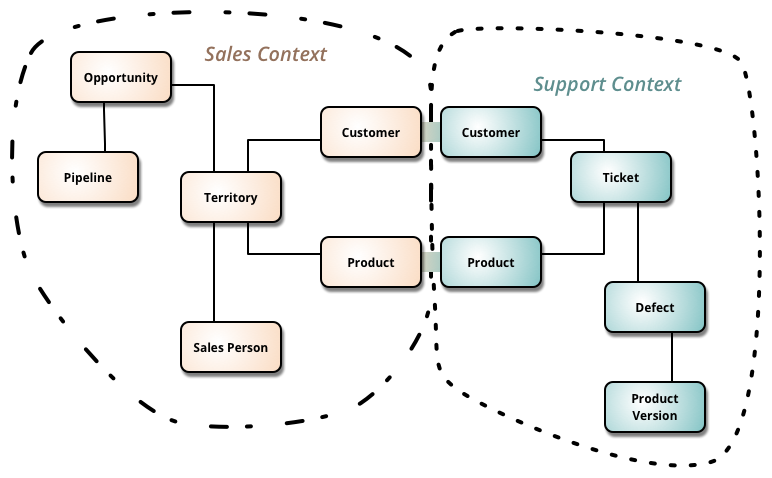

For example, the salary department and the human resources department may model employees in different ways. It's only meant to capture what we are interested in for the current context.ĭifferent domains may be interested in different ways to model the same thing. We know that the model does not capture everything about real employees, and that's not the point of it. "A useful approximation to the problem at hand." - Gerry SussmanĪn Employee class is not a real employee. For example, an online retail system might be working in the domains of shipping (picking appropriate ways to deliver, depending on items and destination), pricing (including promotions and user-specific pricing by, say, location), and recommendations (calculating related products by purchase history). It's not unusual for an application to span several different domains. Airport management, insurance sales, coffee shops, orbital flight, you name it. You CAN ONLY understand Domain driven design by first comprehending what the following are: System into Bounded Contexts, each of which can have a unified model -Įssentially a way of structuring MultipleCanonicalModels. Unification of the domain model for a large system will not beįeasible or cost-effective" 1. In those younger days we were advised to build a unified model of theĮntire business, but DDD recognizes that we've learned that "total For instance this article, BoundedContext, provides an overview of the bounded context concept from Domain Driven Development. Martin Fowler has written a number of articles in which Domain Driven Design as a methodology is mentioned.

Independent steps/areas of problems as bounded contexts, emphasizes aĬommon language to talk about these problems, and adds many technicalĬoncepts, like entities, value objects and aggregate root rules to When building applications,ĭDD talks about problems as domains and subdomains. The common understanding of the solution.
DOMAIN DRIVEN DESIGN ERIC SOFTWARE
Helps in understanding the problem at hand and design software towards Hype level decreasing, many of us forget that the DDD approach really The article provides the following thumbnail description of Domain Driven Design.ĭomain Driven Design advocates modeling based on the reality ofīusiness as relevant to our use cases. Implementation details - in part because the number of entities toĭeal with often grows beyond the size of conference-room white boards.Īlso see this article Domain Driven Design for Services Architecture which provides a short example. Model, which is where a lot of time is lost in working out By splitting the domain complexity in smaller contexts,ĭDD avoids forcing project architects to design a bloated object Minimizes misunderstandings between domain experts and softwareĪrchitects, and it reduces the subsequent number of expensive requestsįor change.

Concretely, it means that a well done DDD analysis Mechanics and dynamics of the domain that the software needs to

The focus is really about the shared communication and improving collaboration so that the actual needs within the problem domain can be discovered and an appropriate solution created to meet those needs.ĭomain-Driven Design: The Good and The Challenging provides a brief overview with this comment:ĭDD helps discover the top-level architecture and inform about the Domain Driven Design is a methodology to address this impediment. The lack of a shared problem domain understanding between the people who need a particular system and the people who are designing and implementing the system seems to be a core impediment to successful projects. The idea is to have a shared model with shared language so that as people from these two different domains with their two different perspectives discuss the solution they are actually discussing a shared knowledge base with shared concepts. The process side of Domain Driven Design involves the collaboration between domain experts, people who know the problem domain, and the design/architecture experts, people who know the solution domain. Domain Driven Design as a methodology provides guidelines for how this model development and technology development can result in a system that meets the needs of the people using it while also being robust in the face of change in the problem domain. The emphasis of Domain Driven Design is to understand the problem domain in order to create an abstract model of the problem domain which can then be implemented in a particular set of technologies. Domain Driven Design is a methodology and process prescription for the development of complex systems whose focus is mapping activities, tasks, events, and data within a problem domain into the technology artifacts of a solution domain.


 0 kommentar(er)
0 kommentar(er)
